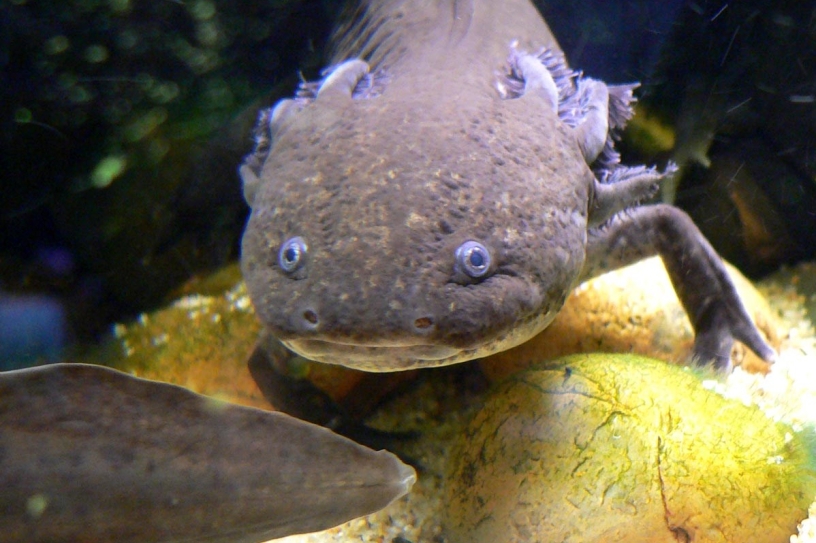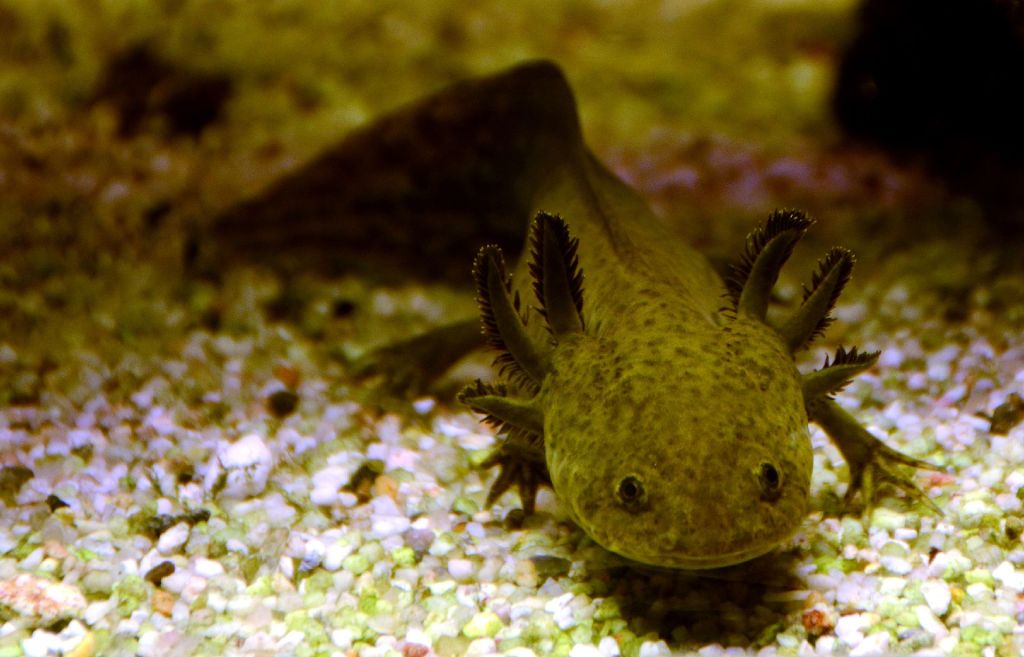Axolotls are strange looking type of salamander, with an even stranger name. The name comes from the Nahuatl language, an Aztec language. Axolotl means ‘water monster’, which I guess is a stab at this poor animal’s looks, which isn’t very nice. And if you’re having trouble pronouncing axolotl, don’t worry. We got off easy. The Aztecs are the lovely people who’s main god is Quetzalcoatl. And even that isn’t as crazy as the Nahuatl language gets. But this blog is about animals, not difficult to pronounce words, so back to the axolotl.
Although ‘water monster’ is pretty harsh, axolotls are funny looking creatures. This is because axolotls are not fully developed salamanders. Much like frogs, salamanders are born in the water and then must undergo metamorphosis to start their adult lives on land. But this doesn’t happen in the axolotl; instead they spend their entire lives in water, and never grow up (much like Peter Pan, but in a less endearing way).
Axolotls retain the characteristics of youthful salamanders, including external gills and a fin on its back. This sort of arrested development is known as neoteny. Neoteny is often seen in domesticated animals, most obviously dogs (shorter snouts, floppy ears and playful attitudes are all characteristics of puppies). For the axolotl, staying in this immature state makes sense, since the waters in which they live have very little food. Metamorphosis in salamanders is triggered by thyroid stimulating hormone, which is derived from iodine. Iodine in particular is lacking in the axolotl’s habitat, causing neoteny. But this might also help the salamanders survive; neotenous animals are smaller and require much less food, and in an uncertain environment like that of the axolotl, this might be the best way to live.
Metamorphosis can be induced in the axolotl, either by giving the animal iodine injections or injections of thyroxine hormone. Axolotls are used extensively in scientific research, for a number of reasons. They have large embryos which are used to view the vertebrate development, as well as in studies of certain embryonic defects. More importantly, the axolotl has the ability to regenerate limbs, and other structures, even restoring parts of their brains. You can imagine how that might be useful in science if we can somehow apply that trait to humans.
Although they are bred in large numbers in captivity for research and for the pet trade, unfortunately the axolotl is nearly extinct the wild, due to habitat loss and the introduction of carnivorous fish. Axolotls are native to only two lakes in Mexico; Lake Xochimilco and Lake Chalco. Lake Chalco was drained to prevent floods, and Lake Xochimilco has been reduced to mainly canals, and is threatened by the expansion of Mexico City.

Axolotls are used to being the top predators in their habitat, and will eat anything they can catch, including each other. They use eyesight, chemical signals and also electrical fields to find their prey, which they then snap up.
Axolotls are probably not going to go fully extinct anytime soon; their usefulness in lab means that the species will be maintained in captivity. But the wild population will likely not survive much longer, which is a shame, since they are such neat little monsters. To end this post, I’d like to share a poem from MAD magazine. It is a parody of Wordsworth’s I Wandered Lonely As a Cloud, and it’s about axolotls.
I Wandered Lonely as a Clod
I wandered lonely as a clod,
Just picking up old rags and bottles,
When onward on my way I plod,
I saw a host of axolotls;
Beside the lake, beneath the trees,
A sight to make a man’s blood freeze.
Some had handles, some were plain;
They came in blue, red pink, and green.
A few were orange in the main;
The damnedest sight I’ve ever seen.
The females gave a sprightly glance;
The male ones all wore knee-length pants.
Now oft, when on the couch I lie,
The doctor asks me what I see.
They flash upon my inward eye
And make me laugh in fiendish glee.
I find my solace then in bottles,
And I forget them axolotls.
Cover image By Stan Shebs, CC BY-SA 3.0

